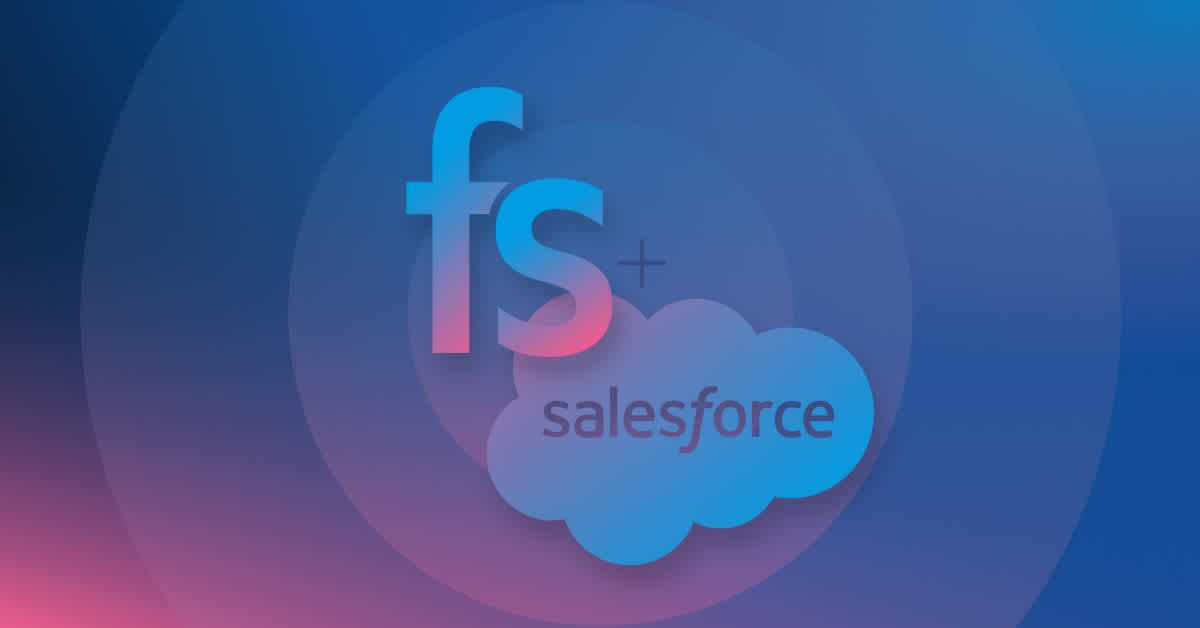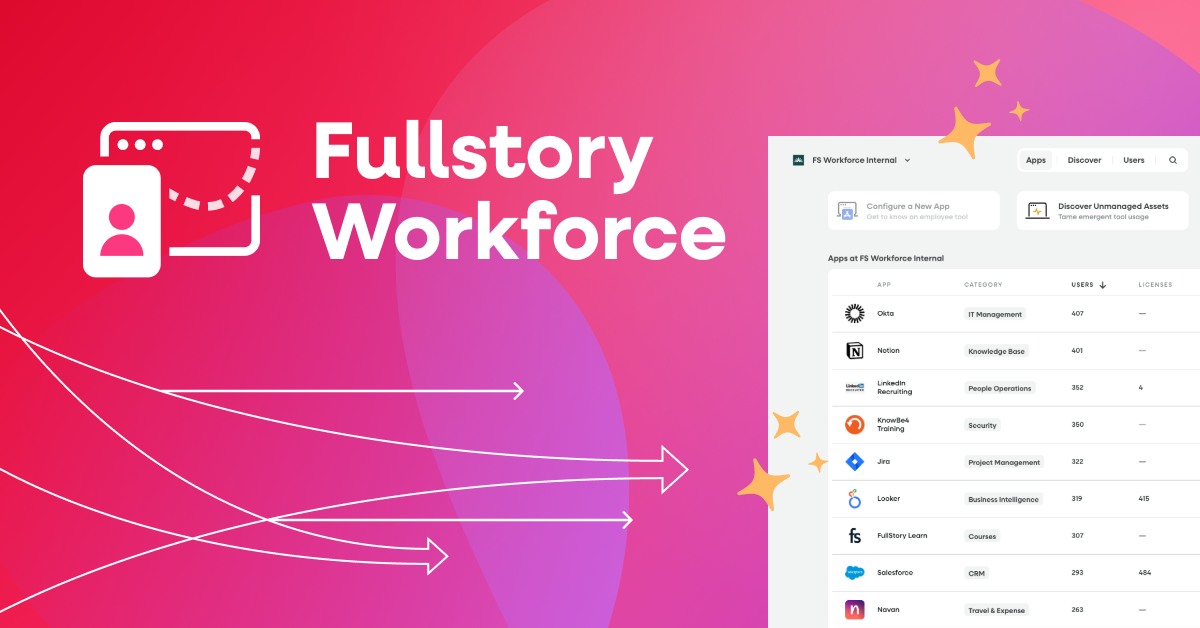During interviews, I often cover the meaning and significance of Fullstory’s company watchwords: Empathy, Clarity and Bionics. And when I ask a candidate for their thoughts on the last one—Bionics—it's not uncommon for me to get a funny look.
What the heck does bionic mean and why do we have it as a company value?
The simplest way to think about it is often the first pop-culture reference that you think of: The Bionic Woman, The Six Million Dollar Man, or Ironman. These familiar characters share something in common: they are humans made more powerful through machinery. Of note, it's the human element that's core to our choice to focus on the word “bionic” instead of “automated” or “robotic.”
It would help if the public conversation around robots and technology could be reframed as human plus machine rather than machine minus human. Because when we’re truly thinking of how we can apply technology to enhance our own human qualities, the end result is for humans to be made happier and more productive (rather than subservient to our robot overlords).
Bionic is a mindset. When understood and properly wielded, striving to be bionic helps teams make better decisions and build better processes—the kind that result in higher quality outcomes.
3 Steps Toward Bionics at Your Company
1. Identify the Friction in the Process
First, understand there will always be bad processes in need of fixing.
Despite our best intentions, poor systems emerge. Cumbersome bureaucracy happens—even to the best companies. The resulting friction can slow operations down and in the worst cases, grind progress to a halt.
Friction in the process can happen for several reasons, such as not solving for the right root cause, evolving needs that result from rapid growth, trying to accommodate too many asks in a single process, or by continuously bolting on solutions to an original process. The key to identifying brokenness in your bionics is that the machine is now opposing its intended function. And in the most egregious cases, the human-element is nowhere to be found.
When friction happens—and it will—take on a bionic mindset. Be willing to experiment, iterate, and adapt. Don’t settle for the status quo. Always be scanning your ecosystem for signs of pain or friction that have appeared since you last checked in. And be self-critical—that amazing process you innovated last year may now be woefully out of date.
Once you’ve identified friction, answer a simple question:
“Does a human add value to this process?”
If the answer is “No,” you’re not looking for a bionic solution, you’re looking for an automated solution—and that is OK! Some things we have to do are just drudgery. Identify those things and do everything in your power to automate or eliminate that type of work.
And for that, you’ll want to read on for Step 2.
If the answer is "Yes"—and a human does add value—then skip to Step 3.
2. Audit Your Time, Automate What You Can
Adding machinery to our daily workflows should free up your time to do the meaty thought work humans do best.
Bionics need not be just about sweeping company-wide processes. Have you ever examined your calendar or used a time tracking tool to figure out exactly how you spend your energy most days? Sometimes it can be eye opening how much time you spend simply manipulating spreadsheets or providing answers to questions that could have been documented.
If you haven’t done this recently, take a moment to audit how you’ve been spending your time. There should be at least a few things you hate doing (see step #1) and at least several things that you really love and look forward to doing.
Here’s how you can get started. Take a sheet of paper. An index card will do. Throughout your day, write down the things you do. If you spend 15 minutes dealing with email, write it down. Is Slack consuming lots of time? Make a tick mark for every time you jump into Slack. Track the meetings you attend, making a note of every 30 minutes you spend in a meeting.
Audit your days over the course of a week. Where are you spending your time? Are there opportunities to cut out activities that rob you of time? E.g. is there a way to batch process Slack? Batch process email?
There are simple things you can do to eek out efficiencies in your daily workflow. While it can be a pain to audit your time, if you can automate certain workflows or find ways to make the drudgery more efficient, it’s well worth it. Because the routine tasks you do every day—even if they only take a couple minutes here and a couple minutes there—add up to huge chunks of time over the weeks, months, and years of your life.
Once you’re saving all that time spent on less meaningful tasks, you’ll want to turn back to leveraging bionics for your favorite, human value adding activities.
3. Start Bionicizing by Constructing Pits of Success
I’m a big fan of process, but I sometimes get dirty looks when I say so. This is because people tend to equate the term process with red tape or friction (see list item #1).
It doesn’t have to be that way.
On the contrary, when you’re wearing your bionic hat, process can (and should!) be equated with a “pit of success” mentality wherein the process itself is seamless and invisible to the user.
“Pit of success? What’s that?” Some light Googling ties the origination of the term “pit of success” back to Rico Mariani from his memo about software development:
"The Pit of Success: in stark contrast to a summit, a peak, or a journey across a desert to find victory through many trials and surprises, we want our customers to simply fall into winning practices by using our platform and frameworks"
— Rico Mariani, MS Research MindSwap, Oct. 2003
Rico’s idea was simple: build products so your end user—by doing what seems to be the simplest, most intuitive thing— always succeeds in their task.
Although this quote was meant to describe product design and development, it also applies to business operations. You can help employees at your company fall into a pit of success by constructing processes wherein the very act of trying to do the right thing actually results in doing the right thing.
First, eliminate as much decision making and as many manual steps as possible. When paths diverge, humans are forced to make decisions which are cognitively expensive and prone to error. <Insert your own favorite research and psychology lessons about how the brain works here>. In short, our brains are constantly trying to run on autopilot and we’re often making split second decisions based on categorizations that may or may not apply to the situation.
Here, the bionic approach is to eliminate ambiguity so that tasks can require less conscious thought. In other words, leverage pattern matching to create habits that are repeatable and predictable. Make it easy for employees to spot a common workflow and then anchor that pattern to a habit.
For example, at Fullstory if you want to ask another department for help about a routine problem, you always do the same thing: you have a conversation with a slackbot (we call our bot “@conscious” in Slack). Our slackbot proceeds to run you through a decision tree of boilerplate questions. Based on your answers, a task is created and routed to the right folks in the other department.
Once you’ve used our “conscious” bot a couple times for the same asks, you learn that the answer to “How do I get help from someone on another team?” always has the same answer: ask the bot, run through the workflow, and go on with your day. In other words, your brain pattern matches and gets to work on autopilot. Meanwhile, other departments—the ones who get asked the same questions over and over again—are saved from reading from a tired script to get routine answers … everyone lands in the pit of success.
Be a Happy Human: Spend Your Time Doing the Things You’re Best At
The goal of bionics is to optimize your human time, making sure machinery is both alleviating the rote drudgery and helping you to make decisions without consuming all of your available brain glucose. Use the time you save to apply your most human skills (e.g. empathy) to the tasks that make you want to come to work every day.
Ultimately, being bionic is not about cutting-edge tools. It’s a process of rationalizing decisions with a view to reaching the most scalable solution possible—while still maintaining our humanity.





